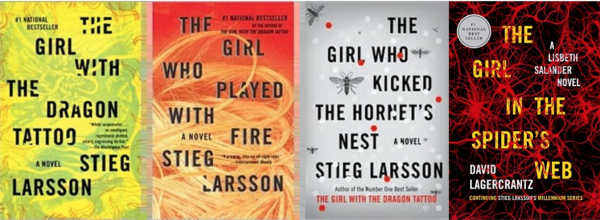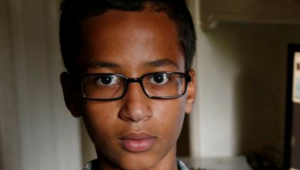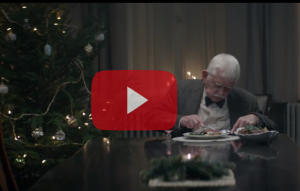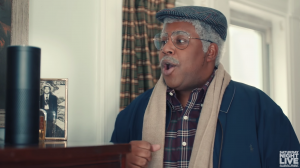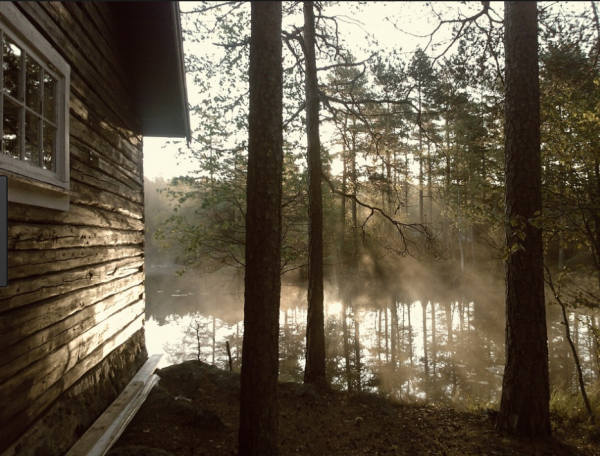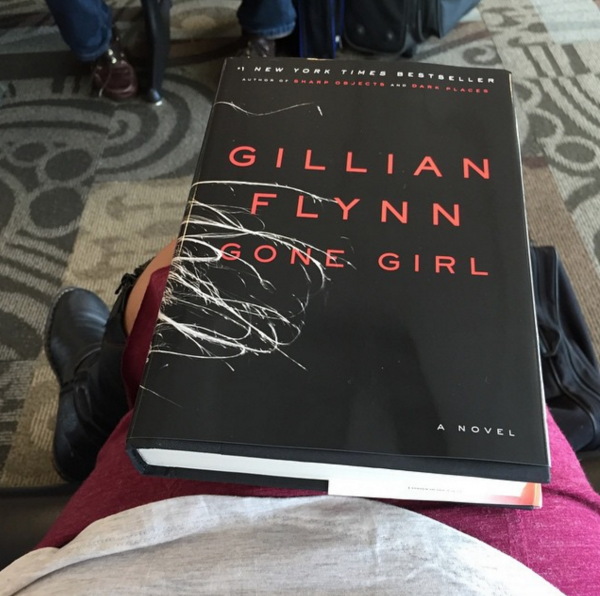
Earlier this year, my daughter Camille and I were talking about the books she was loving. (Number 9, below, I think!) “Why don’t you ever read books?” she asked innocently. It dawned on me that I got into the habit of writing more books than I was reading. That’s not good. So, this year, I decided to start reading (the above photo was taken in an airport as I flew to interview an author for writing a book!) A healthy book habit makes life a lot richer.
Since people frequently ask me what’s on my nightstand, I thought I’d share the successes of 2015 with you. Since I’m late to the game on most of these, you may have already read them. However, these are the best books I read this year!
Enjoy!
1. The Girl on the Train
Paula Hawkins casts a spell with her enchanting novel The Girl on the Train. Here’s the Amazon description:
Rachel takes the same commuter train every morning. Every day she rattles down the track, flashes past a stretch of cozy suburban homes, and stops at the signal that allows her to daily watch the same couple breakfasting on their deck. She’s even started to feel like she knows them. “Jess and Jason,” she calls them. Their life—as she sees it—is perfect. Not unlike the life she recently lost.
And then she sees something shocking. It’s only a minute until the train moves on, but it’s enough. Now everything’s changed. Unable to keep it to herself, Rachel offers what she knows to the police, and becomes inextricably entwined in what happens next, as well as in the lives of everyone involved. Has she done more harm than good?
2. Gone Girl
If you are one of the only seven people in America who have no yet read Gone Girl, you’re in store for a great read. Don’t let the horrible movie adaptation ruin it for you! From Amazon:
On the day of their fifth wedding anniversary, Nick’s wife Amy disappears. There are signs of struggle in the house and Nick quickly becomes the prime suspect. It doesn’t help that Nick hasn’t been completely honest with the police and, as Amy’s case drags out for weeks, more and more vilifying evidence appears against him. Nick, however, maintains his innocence. Told from alternating points of view between Nick and Amy, Gillian Flynn creates an untrustworthy world that changes chapter-to-chapter. Calling Gone Girl a psychological thriller is an understatement. As revelation after revelation unfolds, it becomes clear that the truth does not exist in the middle of Nick and Amy’s points of view; in fact, the truth is far more dark, more twisted, and more creepy than you can imagine. Gone Girl is masterfully plotted from start to finish and the suspense doesn’t waver for one page. It’s one of those books you will feel the need to discuss immediately after finishing because the ending doesn’t just come; it punches you in the gut. –Caley Anderson
3. The Martian
Andy Weir self-published this blockbuster that eventually became a movie starring Matt Damon. That is reason enough to check it out! (Boys will love this novel as well — while there is some language you might not want your boys to pick up, there is no other content to make parents pause.) From Amazon:
Remember Man Plus, Frederik Pohl’s award-winning 1976 novel about a cyborg astronaut who’s sent, alone, to Mars? Imagine, instead, that the astronaut was just a regular guy, part of a team sent to the red planet, and that, through a series of tragic events, he’s left behind, stranded and facing certain death. That’s the premise of this gripping and (given its subject matter) startlingly plausible novel. The story is told mostly through the log entries of astronaut Mark Watney, chronicling his efforts to survive: making the prefab habitat livable and finding a way to grow food, make water, and get himself off the planet. Interspersed among the log entries are sections told from the point of view of the NASA specialists, back on Earth, who discover that Watney is not dead (as everyone assumed) and scramble together a rescue plan. There are some inevitable similarities between the book and the 1964 movie Robinson Crusoe on Mars, but where the movie was a broad sci-fi adventure, the novel is a tightly constructed and completely believable story of a man’s ingenuity and strength in the face of seemingly insurmountable odds. Riveting. –David Pitt
4, 5, 6, and 7. The Girl with the Dragon Tattoo series (yes, even the new 4th one!)
Okay, so this series is a little dark, so proceed with caution. But fans of The Girl with the Dragon Tattoo, The Girl Who Played with Fire
, and The Girl Who Kicked the Hornet’s Nest
know the exquisite agony of a series ending without hope of any more sequels. (The original author Stieg Larsson died even before the books hit the shelves.) What to do? Well, fans — and even the New York Times — are not disappointed with the publisher’s decision to carry on the series with investigative journalist David Lagercrantz:
Fans of Stieg Larsson’s captivating odd couple of modern detective fiction — the genius punk hacker Lisbeth Salander and her sometime partner, the crusading investigative journalist Mikael Blomkvist — will not be disappointed by the latest installment of their adventures, written not by their creator, Stieg Larsson (who died of a heart attack at the age of 50 in 2004), but by a Swedish journalist and author named David Lagercrantz. Though there are plenty of lumps in the novel along the way, Salander and Blomkvist have survived the authorship transition intact and are just as compelling as ever.
8. Lila: A Novel
Lila, a beautiful book on redemption and the discomfort of love, stands alone, even though this is the third in a series. (I’ve not read the other two books.) There are passages in this book that my 16 year old daughter and I still talk about — one baptism scene in particular that causes her to get a catch in her throat as she describes it. The Pulitzer Prize winning author, Marilyn Robinson, seems to write from a deeply reformed and Christian perspective. This is how Christian art should look. From Amazon:
“Marilynne Robinson tracks the movements of grace as if it were a wild animal, appearing for fleeting intervals and then disappearing past the range of vision, emerging again where we least expect to find it. Her novels are interested in what makes grace necessary at all–shame and its afterlife, loss and its residue, the limits and betrayals of intimacy. In Lila, her brilliant and deeply affecting new novel, even her description of sunlight in a St. Louis bordello holds a kind of heartbreak . . . Robinson’s determination to shed light on . . . complexities–the solitude that endures inside intimacy, the sorrow that persists beside joy–marks her as one of those rare writers genuinely committed to contradiction as an abiding state of consciousness. Her characters surprise us with the depth and ceaseless wrinkling of their feelings.” ―Leslie Jamison, The Atlantic
9. The Book Thief
My daughter’s favorite book, I took this along on vacation this summer and read it while on the Disney Magic. (Great vacation! Read about it HERE!) In this literary novel, the narrator is death. From Amazon:
Zusak has created a work that deserves the attention of sophisticated teen and adult readers. Death himself narrates the World War II-era story of Liesel Meminger from the time she is taken, at age nine, to live in Molching, Germany, with a foster family in a working-class neighborhood of tough kids, acid-tongued mothers, and loving fathers who earn their living by the work of their hands. The child arrives having just stolen her first book–although she has not yet learned how to read–and her foster father uses it, The Gravediggers Handbook, to lull her to sleep when shes roused by regular nightmares about her younger brothers death. Across the ensuing years of the late 1930s and into the 1940s, Liesel collects more stolen books as well as a peculiar set of friends: the boy Rudy, the Jewish refugee Max, the mayors reclusive wife (who has a whole library from which she allows Liesel to steal), and especially her foster parents. Zusak not only creates a mesmerizing and original story but also writes with poetic syntax, causing readers to deliberate over phrases and lines, even as the action impels them forward. Death is not a sentimental storyteller, but he does attend to an array of satisfying details, giving Liesels story all the nuances of chance, folly, and fulfilled expectation that it deserves. An extraordinary narrative.–Francisca Goldsmith, Berkeley Public Library, CA
10. The Biggest Story: How the Snake Crusher Brings Us Back to the Garden
Okay, so this is not a novel and it doesn’t have to do with dragons or tattoos. So what’s this doing on my list? Do you ever feel like going to church is like walking into a movie after missing the plot set up? People use words that you never hear in normal life and the characters in the Bible seem sort of… uninspiring.
I’ve got a book for you. I mean, for your kids, of course.
Kevin DeYoung has created, along with illustrator Don Clark, a book that frames the Bible from 30,000 feet. The Biggest Story: How the Snake Crusher Brings Us Back to the Garden is ostensibly a kids’ book. But as I’ve been reading it to my seven year old, I have to admit that my voice has gotten a little shaky with emotion. The book, as many kids’ Bible books do, begin in the Garden of Eden and follows the Biblical story throughout the Bible… but in the most CURSORY way possible. So you’re not getting bogged down in the sometimes headscratching stories of the Old Testament — or the New for that matter. It’s an overview of what God was doing… and it’s beautiful.
Jesus as the “snake crusher?” Yeah, I’m in.
Order my next three books on Amazon:
Read more on the Patheos Faith and Family Channel, follow Nancy on Facebook, Twitter, and Instagram!




